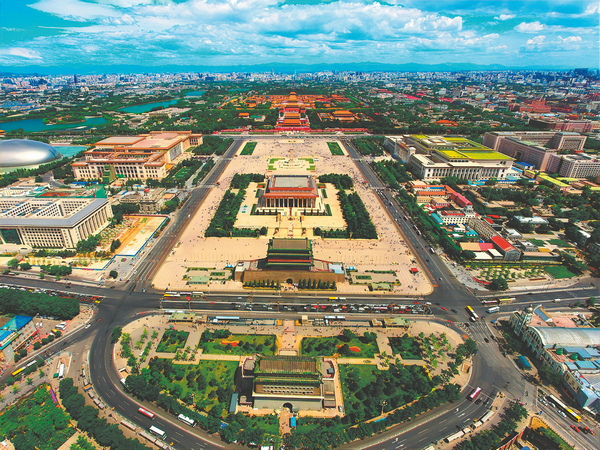

Neutrality and harmony
According to Lyu Zhou, director of the National Heritage Center at Tsinghua University, the planning concept of the Beijing Central Axis originates from the philosophical ideals of neutrality and harmony, and the cultural tradition of "choosing the center" within Chinese civilization.
"It serves as a material embodiment of the traditional Chinese worldview, values, and concept of time and space, carrying strong symbolic significance," Lyu says.
The concepts behind the Beijing Central Axis date back to Kaogongji (Book of Diverse Crafts), written before 221 BC, which details the principles of capital city planning.
During the Western Han Dynasty (206 BC-AD 24), the book was rediscovered and incorporated into the Confucian classic Zhouli (Rites of Zhou), becoming the orthodox Confucian thinking regarding the ideal paradigm of the capital city.
The Yuan Dynasty (1271-1368) selected in the 13th century the site for what is today's Beijing to build its capital, Dadu. A datum point was set on the east bank of today's Shichahai Lake, where the Central Platform and the Central Tower were established.
Extending southward from the Central Platform, a preliminary axis was determined, and the palace city was constructed on it. With the Central Platform at the center, a rectangle grid was designed to be the boundaries of Dadu.
From 1406 to 1564, as the construction of the inner and outer cities of Beijing continued, the Central Axis with a total length of 7.8 kilometers, was formed.
Based on the guidelines prescribed in Kaogongji, ancient Chinese built the temples, altars and government buildings that are aligned with or placed symmetrically along the Central Axis.
Many building locations match accounts in the book, including "court in the front, market at the back", corresponding to the imperial court, the Forbidden City, and the markets by the Bell and Drum Towers, as well as "an ancestral temple on the left, an altar of land and grain on the right", denoting the Imperial Ancestral Temple and the Altar of Land and Grain, located symmetrically on the east and west sides of the Central Axis.
"Throughout the city's construction phases, the Central Axis commanded the entire city's layout, setting a symmetrical design. This is particularly significant in reflecting the characteristics of our culture and aesthetics," Lyu says.
"This is why today, when we stand on the Central Axis, taking photos or filming footage, we can find countless angles that illustrate this centrality, symmetry and order."